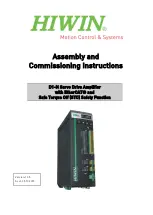
POWER Amplifiers
10
Indicators and Controls
Power Indicator (POWER)
The power indicator provides a visual indication that the amplifier is turned on.
Input Level Control (LEVEL)
The input LEVEL control matches the output of your radio to the input of the
amplifier. After the installation is complete, make sure the input level control on
the amplifier is turned down all the way (counter-clockwise or all the way to the
left). Play a tape or CD (make sure bass and treble settings or Bass EQ are
flat) and turn the volume up slowly until you just start to hear distortion. Back
the volume down just a bit. On the amplifier, slowly turn up the input level
control (clockwise or to the right) until you just start to hear distortion, then
back it down a bit. Now your radio and amplifier levels are matched.
BASS EQ
The Bass EQ is continuously adjustable from 0 to +12dB @ 45Hz. Adjusting
the Bass Boost level allows different subwoofer/enclosure combinations to be
equalized. Use this control to increase the level of low bass available from your
subwoofer/enclosure combination. Ported and Band Pass enclosures should
be limited to about +6dB to +9dB of boost. Sealed enclosures should be able
to accept the full +12dB of boost, if necessary. The full +12dB of boost should
be reserved for special applications since improper use of the Bass Boost
could damage your subwoofers at high volumes.
Low Pass Filter (LPF)
The Low Pass Filter controls adjust the crossover point. Typical crossover is
between 60Hz and 80Hz for ported and sealed enclosures. Bandpass boxes
will typically use a higher crossover setting between 125Hz and 150Hz. Since
musical tastes vary, you should play music that you would normally listen to in
your vehicle, with the above settings as a starting point. If necessary, set the
crossover by ear.
High Pass Filter (HPF)
The high pass filter will limit the low frequencies being transmitted to your
speakers. This can be useful in number of situations. For example, if you
selected the high pass filter and set the crossover to 40Hz, then you would
have an infra-sonic (sub-sonic) filter at 40Hz, which would be useful with
certain enclosure/subwoofer combinations that were tuned between 45Hz and
50Hz. Other uses might include limiting the low frequencies to smaller
speakers (6 1/2", 6 X 9", etc.) by adjusting the crossover to a higher setting
(80–100Hz).
Crossover (X-OVER)
The Jensen Power series of amplifiers have built-in low-pass and high-pass
crossover filters for bi-amplifying the system. Adjust the crossover to
accommodate your chosen installation method. Select LPF (low pass filter)
when the amplifier will be driving woofers or subwoofers. Choose FULL when
crossover mode is not active and the amplifier is in “full range” mode. Select
HPF (high pass filter) when the amplifier will be driving full-range or separate
speakers, and you want to limit the “bass” being transferred to these speakers.
Mode Switch
Power 400 and 880
The 400 and 880 come equiped with a MONO/STEREO MODE switch. Use
STEREO mode when you have a 2-channel input from the source unit. Use
MONO mode when you have a single input from the source unit. See “Input
Wiring” on page 8.
Power 760 and 920
The 760 and 920 come equiped with a 2/3/4 MODE switch and can be
configured for three different input modes: 2 channel, 3 channel or 4 channel.
Содержание Power 1050
Страница 2: ...PowerPlus Amplifiers ii...
Страница 16: ...POWER Amplifiers 14...
Страница 30: ...Amplificadores POWER 28...
Страница 47: ......
Страница 48: ...Audiovox Electronics Corporation Hauppauge NY 11788 1 800 323 4815 www jensen com 2007 Audiovox v 012407...













































